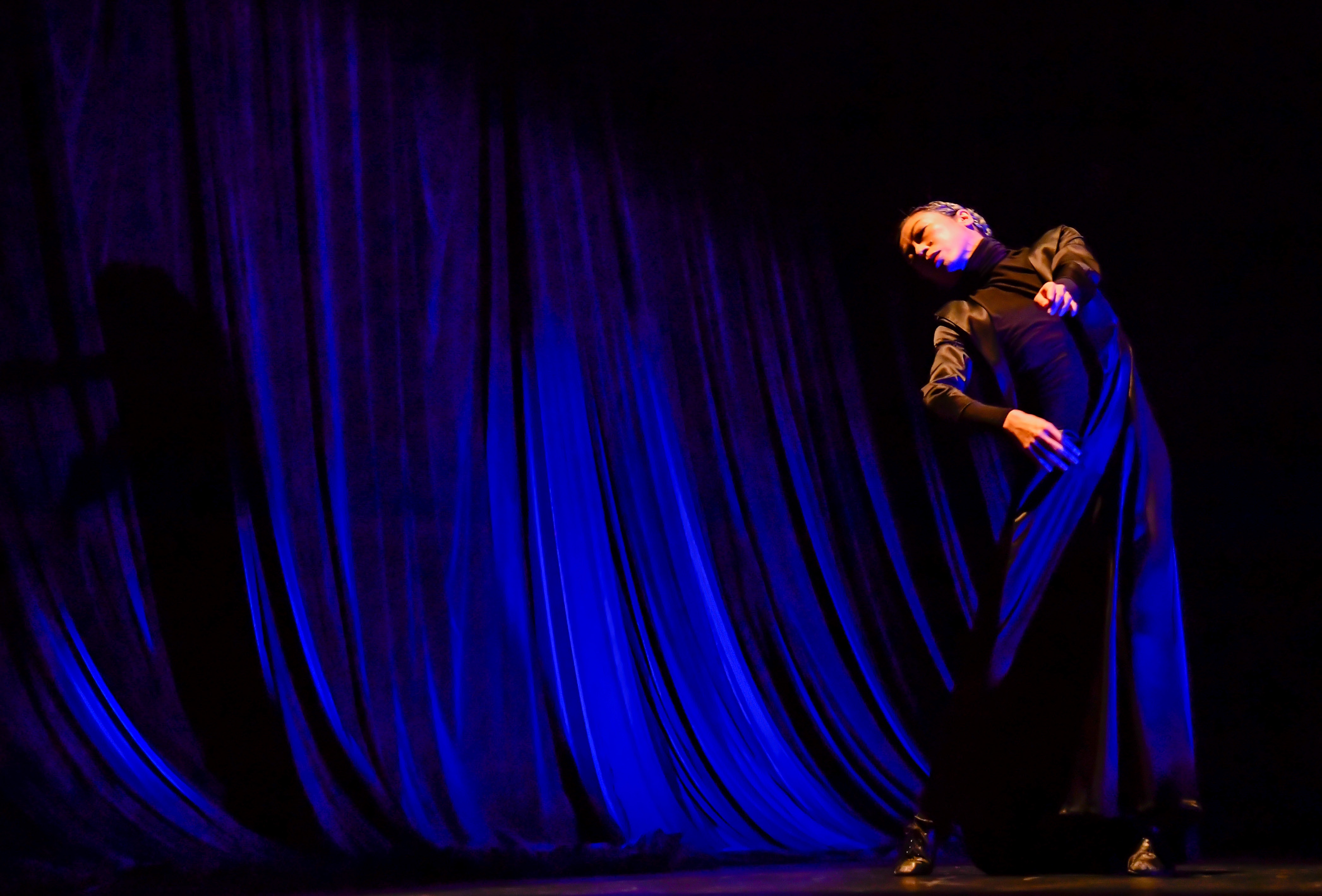Words by Paula Riofrio
The lighting sculpts the stage as it is revealed before our eyes. The dancers become a sensuous spell that tells of the time of Tristan and Isolde. Tristan lies across a blue rectangle formed by light coming from a side of the theatre. Detached from him, enters Isolde surrounded by a medallion light that blooms her sadness, mute. The expressiveness of their looming emotions is decrypted in their eyes and movement, essentialist organic movement and physical theatre blur into one another giving birth to a new language, similar to those in which souls must speak. Devout and mystical, their sensuous language is no longer an exploration but a trace that carries experiences, memories and sensations, ever transforming the vivid fire that built the theatre around us before the lights turn on.
Saburo Teshigawara and his lifelong collaborator, Rihoko Sato, composed a duet to be performed as spontaneous reorganisations of their vocabulary developed in the counted tempos of Wagner’s first eine Handlung, musicalised drama. Teshigarawa’s perceptual organisation started from the outside -to- the inside, as his first encounter with art took shape within sculpture and painting, and only later in his life, it was nourished by movement with classical ballet training. Sato, on the other hand, started in gymnastics at a very young age, and later on in her 20s she became curious about dance as a way of communicating herself, as a way to know her mesure and meaning, looking first into her insides to then reflect about and around the outside. Yet both coincide with the idea that inside the body there is a universe; it is perhaps the reason why Tristan and Isolde generates an animus – anima soul language, a dialogue between two existences that conform one another.
Wagner’s 1859 Tristan and Isolde composition creates a sublime storyline for Teshigawara’s rendering. The strings played in cellos, violas and violins find their place in the muscle fibres that allocate the quivering hearts of the audience; we see Isolde playing the instruments with every movement, her arms and steps do not mark a tempo, they live through the story that music utters. Her enchantment in waves and spins reveal to the heart how to remember fervent love, and its evanescing calmness. Swiftly, the hands of both lovers become a medium for synesthesia to arrive. The voice of Tristan merges with the light. Isolde becomes ethereal, turns into music. The arp, the english corn, both surround the bodies into the same rapture of feeling, brimless emotions and no love lost.
As a landscape is being drawn, dandelion yellow and cold ocean blue lights contrast one another, rhythmically constructing the stage in unison with Wagner. Dandelion yellow lightly caresses her face and colours her aura. Cold blue, as the ocean sailed in search for Isolde, he strives to endeavour a way in his movement to make his way back to her. The cast of shadows that kept them apart finally opens; they fumble no more. They rejoin with chaotic persistence, their limbs become reincarnated spirits as in a trance, they multiply and eternize, into an unconfined land.
Movements are questions to make one another: they fell in love, fell irremediable and irrevocably in love. Isolde is on the floor, awakened by the hands of her beloved. His magic spell brings her back to life. Both their bodies become possessed by the fervent currents of the ocean ruled by the full moon. The light opens and closes. Tristan walks his final path, facing the backcloth, shoulders to the audience, he gives a last goodbye, but before it all ends: he retrieves attention to his hands, as holding the treasure of a lost memory with unconfined happiness. Isolde, closing her arms underneed the dim blue light, finished the show with a silent clap; the audience witnessed the disappearance of her open chest after their last embrace.
